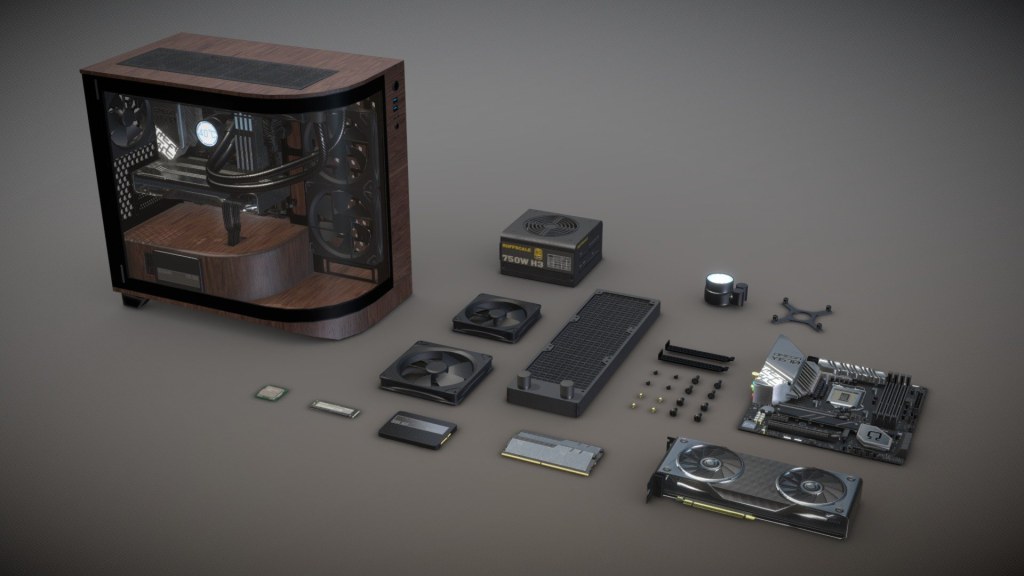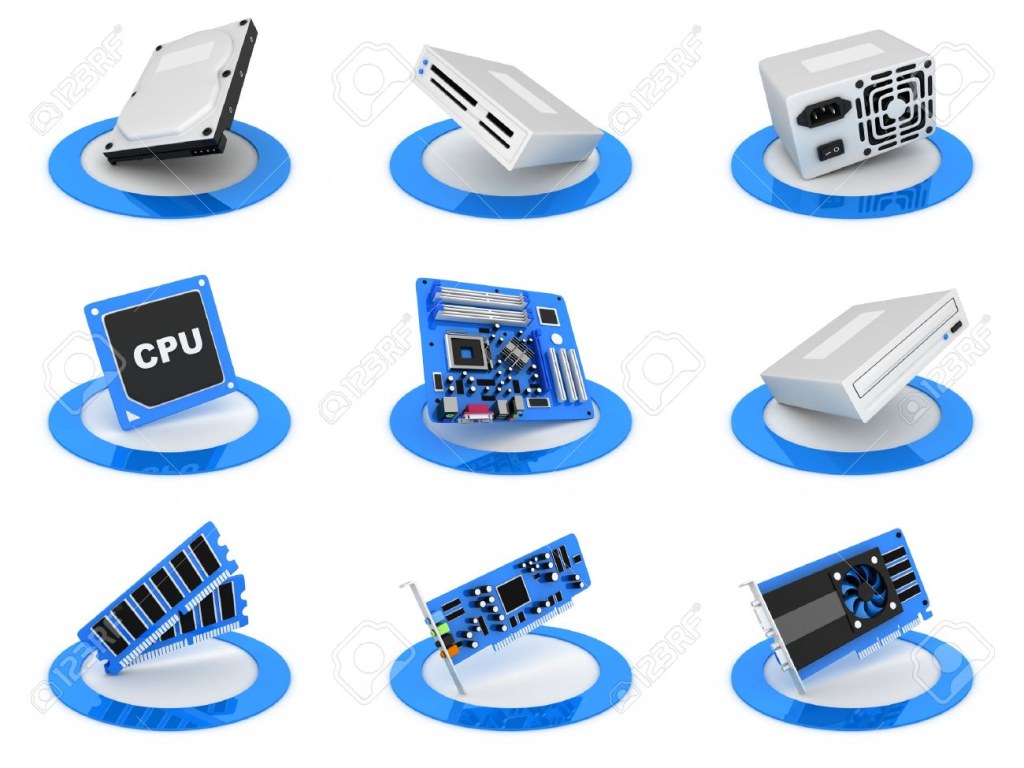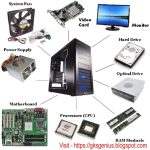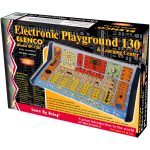Experience The Futuristic World Of Computer Parts 3D: Unveil The Power Of Cutting-Edge Technology!
Computer Parts 3D: Revolutionizing the Future of Technology
Introduction
Dear Readers,
3 Picture Gallery: Experience The Futuristic World Of Computer Parts 3D: Unveil The Power Of Cutting-Edge Technology!



Welcome to our insightful article on the exciting world of computer parts 3D. In this digital era, technology continues to evolve rapidly, and 3D printing has emerged as a game-changer. The ability to create three-dimensional objects with ease and precision has opened up new possibilities in various industries, including computer hardware. In this article, we will delve into the fascinating world of computer parts 3D, exploring its benefits, applications, and potential impact on the future of technology. So, without further ado, let’s embark on this enlightening journey!
What is Computer Parts 3D?

Image Source: iconscout.com
🔍 Comput parts 3D refers to the process of creating computer components using three-dimensional printing technology. It involves the layer-by-layer construction of objects based on digital designs. This innovative technique replaces traditional manufacturing processes, enabling faster, more efficient, and cost-effective production of computer parts. With computer parts 3D, manufacturers can prototype and manufacture complex components that were previously unattainable through conventional methods.
Who is Utilizing Computer Parts 3D?
🔍 Computer parts 3D has captivated the attention of various industries, including the automotive, aerospace, healthcare, and electronics sectors. In the automotive industry, manufacturers are using 3D printing to produce custom-made components, reducing costs and improving overall performance. The aerospace industry benefits from the lightweight and intricate designs achievable through computer parts 3D, enhancing fuel efficiency and performance. Additionally, healthcare professionals are utilizing 3D printing to create personalized medical devices, implants, and prosthetics. The electronics industry is also embracing this technology, revolutionizing the production of circuit boards and other intricate electronic components.
When Did Computer Parts 3D Emerge?
🔍 The concept of Computer parts 3D and three-dimensional printing itself traces back to the 1980s. However, it wasn’t until the early 2000s that this technology gained significant traction. Since then, advancements in 3D printing hardware, software, and materials have accelerated its adoption across various industries. As the technology continues to evolve, we can expect even more groundbreaking applications and improvements in the years to come.
Where Can Computer Parts 3D Be Applied?

Image Source: sketchfab.com
🔍 Computer parts 3D has a vast range of applications. From manufacturing small electronic components to creating large-scale automotive parts, the possibilities are endless. The technology is particularly useful in prototyping, allowing designers and engineers to quickly iterate and refine their products. Additionally, computer parts 3D finds applications in the production of custom-made consumer products, architectural models, and even artistic creations. The versatility of 3D printing opens up a world of opportunities across various industries and sectors.
Why Choose Computer Parts 3D?
🔍 Computer parts 3D offers numerous advantages over traditional manufacturing methods. Firstly, it enables rapid prototyping, significantly reducing the time and cost required to develop new products. With 3D printing, designers can quickly transform their ideas into tangible objects, allowing for faster innovation. Additionally, computer parts 3D allows for the creation of complex geometries and intricate designs that are challenging to achieve with conventional manufacturing. The ability to customize products according to individual needs and preferences is another key benefit of 3D printing. Furthermore, this technology reduces material waste, making it a more sustainable option for production.
How Does Computer Parts 3D Work?

Image Source: 123rf.com
🔍 Computer parts 3D operates through a process known as additive manufacturing. It involves creating an object layer by layer, starting with a digital design. First, the design is sliced into thin layers using specialized software. Then, these layers are sequentially printed using a 3D printer. The printer deposits and fuses materials, such as plastic, metal, or resin, to create the desired object. It is a precise and intricate process that requires expert calibration and control. With advancements in technology, 3D printers are becoming more accessible and affordable, making computer parts 3D increasingly viable for various applications.
Advantages and Disadvantages of Computer Parts 3D
🔍 Like any technology, computer parts 3D has its advantages and disadvantages. Let’s explore them:
Advantages:
1. Increased Design Flexibility: Computer parts 3D allows for the creation of complex and customized designs that are difficult to achieve with traditional methods.
2. Faster Prototyping: With 3D printing, designers can quickly iterate and refine their product ideas, reducing time to market.
3. Cost-Effective Production: The elimination of complex tooling and setup costs associated with traditional manufacturing methods makes computer parts 3D more cost-effective.
4. Reduced Material Waste: Additive manufacturing minimizes material waste, making it a more sustainable production method.
5. On-Demand Manufacturing: 3D printing enables on-demand production, eliminating the need for large inventories and reducing storage costs.
Disadvantages:
1. Limited Material Selection: While the range of materials for 3D printing continues to expand, it is still more limited compared to traditional manufacturing options.
2. Production Speed: 3D printing can be slower compared to conventional manufacturing processes, especially for large-scale production.
3. Post-Processing Requirements: Depending on the application, 3D-printed parts may require additional post-processing steps, such as sanding or painting, to achieve the desired finish.
4. Equipment Costs: While 3D printers have become more affordable, high-quality industrial-grade printers can still be expensive.
5. Intellectual Property Concerns: The ease of replicating 3D designs raises concerns regarding intellectual property rights and piracy.
Frequently Asked Questions (FAQs)
1. Is computer parts 3D only used in manufacturing industries?
🔍 No, computer parts 3D has applications in various industries, including healthcare, architecture, consumer products, and more.
2. Can 3D printing replace traditional manufacturing methods entirely?
🔍 While 3D printing offers many advantages, it is unlikely to completely replace traditional manufacturing methods due to factors such as production speed and material limitations.
3. Are 3D-printed parts as strong as traditionally manufactured parts?
🔍 The strength of 3D-printed parts depends on factors such as material selection and design. While some 3D-printed parts can match or exceed the strength of traditional parts, others may have limitations.
4. How long does it take to 3D print a computer part?
🔍 The time required to 3D print a computer part varies depending on factors such as the complexity of the design, size, and the type of 3D printer used.
5. Can I print computer parts 3D at home?
🔍 Yes, there are consumer-grade 3D printers available for home use. However, they may have limitations in terms of print quality, material selection, and size.
Conclusion
🔍 In conclusion, computer parts 3D has revolutionized the manufacturing industry and has the potential to reshape the future of technology. With its ability to create complex designs, reduce production costs, and accelerate innovation, 3D printing opens up a world of possibilities. However, it is essential to consider the limitations and challenges associated with this technology. As 3D printing continues to advance, we can expect to witness its widespread adoption and further integration into various sectors. So, embrace the future of technology, and let your imagination take flight with computer parts 3D!
Final Remarks
🔍 Dear Readers,
Thank you for joining us on this enlightening journey into the world of computer parts 3D. Please note that while we strive to provide accurate and up-to-date information, the rapidly evolving nature of technology may result in certain details becoming outdated. We encourage you to conduct further research and consult reputable sources for the latest developments in the field of computer parts 3D. We hope this article has sparked your curiosity and inspired you to explore the endless possibilities that lie ahead. Happy 3D printing!
This post topic: Electronics

